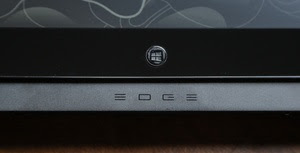Not too long ago, some of Google Glass's specs got out there, but we were missing two critical pieces: CPU and RAM. Now, thanks to some endeavoring hackers who've gotten their hands on a pair, we now know some of those details.
Jay Lee, with some help from Liam McLoughlin, managed to find Glass's USB debugging setting and hook it up to ADB which in turn spilled the additional specs:
Jay Lee, with some help from Liam McLoughlin, managed to find Glass's USB debugging setting and hook it up to ADB which in turn spilled the additional specs:
- Android 4.0.4 - Ice Cream Sandwich
- OMAP 4430 CPU - Dual Core
- 682mb of RAM
But in the absence of any official specs from Google, this is the best we can get for now. And who knows, things could change by the time a real consumer model actually rolls out, but these seem to be the specs for the specs floating around right now and knowledge is power! More here.


















